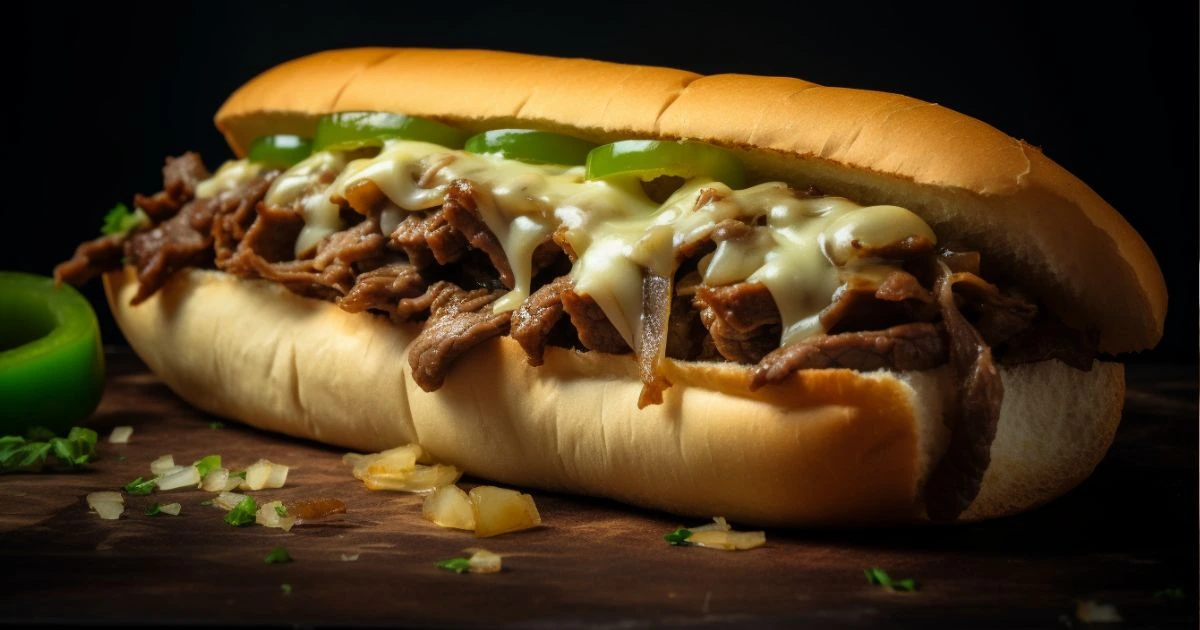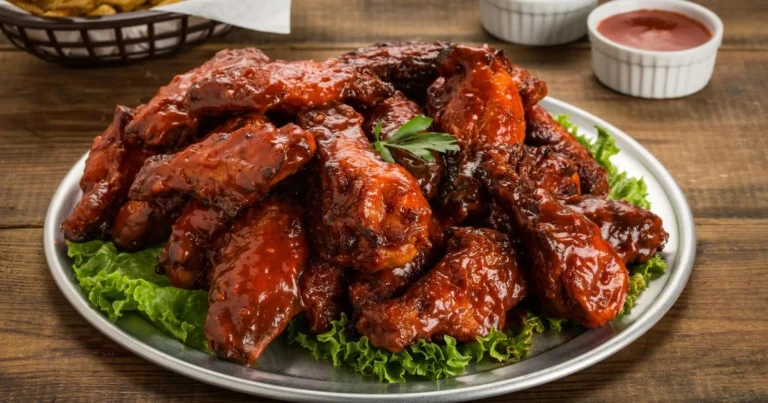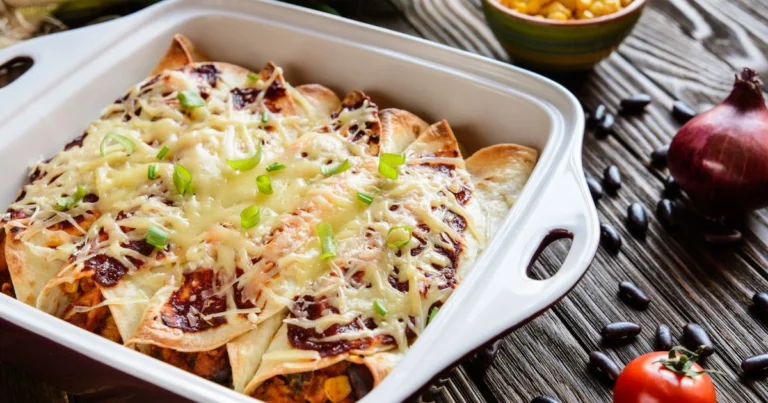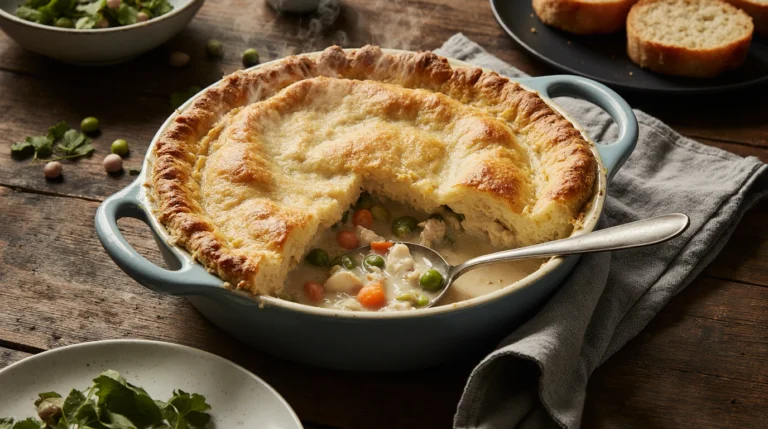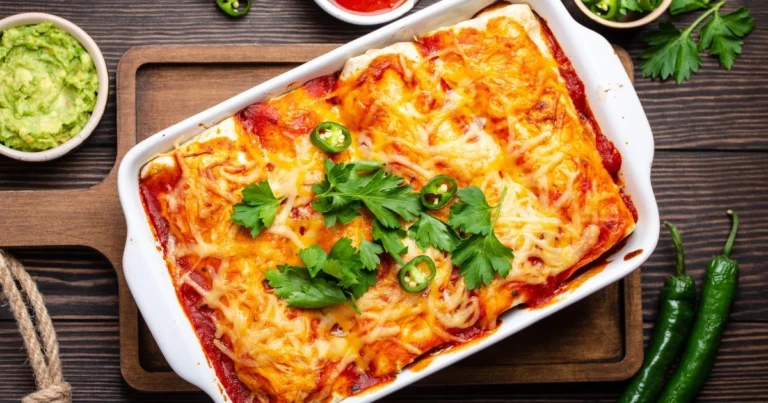How to Make a Chicken Cheesesteak at Home: Step-by-Step Guide
Do you recall that specific sensation? You take a bite, and there’s a perfect fusion of tender chicken, sweetly caramelized onions, and wonderfully melted cheese, all encased in a soft, yet robust, roll. It transcends being merely a sandwich; it’s an event, a flavor imprint that lingers pleasantly long after the final mouthful. For an extended period, that distinct experience seemed limited to your preferred local deli or a pilgrimage to Philadelphia. Yet, what if I disclosed that the key to replicating that mouthwatering enchantment resides right within your personal culinary space? Prepare to transform your residence into a haven of delectable delights, because today, we’re not just fabricating a chicken cheesesteak; we’re directly conveying that iconic, deeply gratifying taste to you, one delightful action at a time.
Table of Contents
Unveiling the Secrets to the Perfect Homemade Chicken Cheesesteak
Creating a remarkable chicken cheesesteak at home isn’t about complex culinary techniques; it’s about understanding the synergy of quality components and precise execution. You’ll find that with the right materials and a little patience, you can achieve a result that rivals your favorite sandwich shop. Let’s delve into what truly matters for this classic.
Gathering Your Arsenal: Essential Ingredients for Your Chicken Cheesesteak
Before you commence your gastronomic journey, let’s ensure you possess all the necessary elements for an authentic and truly delicious chicken cheesesteak. The quality of your starting materials significantly influences the final flavor profile.
The Stars of the Show: Chicken and Cheese
The foundational components of your chicken cheesesteak are, naturally, the chicken and the cheese. Opting for the right type and preparing them correctly is paramount.
- Chicken:
- Key Points: For the most succulent and flavorful sandwiches, boneless, skinless chicken thighs are often preferred. They retain moisture effectively and are more forgiving during the cooking process than chicken breast. If you prefer a leaner option, boneless, skinless chicken breast will also work, but be mindful not to overcook it.
- Preparation: The secret to the classic cheesesteak texture is thinly slicing or finely chopping your chosen chicken. This allows for rapid and even cooking, ensuring each piece is tender and integrated into the sandwich’s overall structure. Consider partially freezing the chicken for about 20-30 minutes before slicing; this firms it up and makes achieving those delicate, uniform cuts considerably simpler. Slice against the grain to ensure maximum tenderness.
- Data/Sources: Chicken thighs inherently possess more fat content, which translates to a richer taste and greater moisture retention, especially beneficial for a sandwich where dryness would be a detriment. Chicken breast, while leaner, demands more attention during cooking to maintain its juiciness.
- Cheese:
- Key Points: Your choice of cheese dramatically influences the character of your chicken cheesesteak. Provolone, in both sharp and mild varieties, offers a classic, tangy melt. For those seeking an undeniably authentic Philadelphia experience, Cheez Whiz is the go-to choice, providing a distinctive, creamy, and somewhat salty finish. American cheese also presents a smooth, consistent melt. Some connoisseurs also favor Cooper Sharp, a processed white American cheese known for its exceptional melting properties and savory taste.
- Preparation: Whether sliced or shredded, ensure your cheese is ready for optimal melting. If employing Cheez Whiz, a slight warming beforehand can enhance its spreadability.
- Data/Sources: The introduction of Cheez Whiz to the cheesesteak scene in the 1950s was a game-changer, favored for its unique gooey consistency that simpler provolone initially lacked. While provolone was the original cheese added in the 1940s, Cheez Whiz quickly gained a fervent following, becoming synonymous with the “Philly style” for many. Each cheese brings its own unique contribution to the sandwich’s profile.
The Flavor Foundation: Onions, Peppers, and Mushrooms
These aromatic additions deepen the overall flavor profile of your chicken cheesesteak, adding sweetness, earthiness, and a touch of zest.
- Onions:
- Key Points: Sweet onions, such as Vidalia or common yellow onions, are ideal for this preparation. Their natural sugars caramelize beautifully when cooked, imparting a deep, savory sweetness that is characteristic of a great cheesesteak.
- Preparation: Thinly slicing your onions ensures they soften and caramelize evenly, distributing their flavor throughout the mixture.
- Peppers (Optional):
- Key Points: Green bell peppers are the traditional choice for adding a crisp-tender texture and a slightly bitter, fresh counterpoint to the richness of the chicken and cheese. However, feel free to incorporate red or yellow bell peppers for added sweetness and a burst of color.
- Preparation: Like the onions, thin slicing is recommended for consistent cooking.
- Mushrooms (Optional):
- Key Points: Cremini or white button mushrooms contribute an earthy, umami depth, enriching the overall savoriness of your chicken cheesesteak.
- Preparation: Slice them evenly to ensure they cook down uniformly.
The Vehicle: Choosing the Right Roll
The roll is more than just a wrapper; it’s an integral component that must stand up to the moist, flavorful filling while offering a pleasing textural contrast.
- Key Points: If you can procure them, Amoroso rolls are widely considered the benchmark for an authentic Philadelphia cheesesteak, known for their specific chewiness and ability to hold up to the ingredients without becoming waterlogged. Lacking these, seek out high-quality hoagie rolls or sub rolls that possess a soft interior and a slightly crusty exterior. The balance is critical; too soft, and it collapses; too hard, and it detracts from the experience.
- Data/Sources: A superior roll functions as a crucial absorber of the savory juices from the chicken and vegetables, while its crust provides a necessary textural bite against the yielding interior. This duality is what truly elevates the sandwich.
The Supporting Cast: Oils and Seasonings
These components, though seemingly minor, are vital for layering flavor and ensuring proper cooking.
- Key Points: Employ olive oil or a neutral vegetable oil for sautéing your ingredients. For seasoning your chicken, you’ll need salt, freshly ground black pepper, garlic powder, and onion powder. A pinch of red pepper flakes is an excellent optional addition for those who appreciate a subtle warmth.
Your Chicken Cheesesteak Ingredient Checklist
This detailed table will help you keep track of everything you need for your magnificent chicken cheesesteak.
| Ingredient | Quantity | Notes |
| Boneless, skinless chicken breast/thighs | 1.5 lbs | Thinly sliced or finely chopped. Thighs yield a juicier outcome; breasts are leaner. Partially freeze for easier slicing. |
| Provolone cheese | 8-12 slices | Or Cheez Whiz (for classic Philly style), American cheese, or Cooper Sharp for an excellent melt. Adjust quantity to your preference for cheesiness. |
| Sweet onions | 1 large | Thinly sliced for optimal caramelization and even distribution. |
| Green bell pepper | 1 (optional) | Thinly sliced. Adds a traditional crisp-tender element and a hint of fresh bitterness. |
| Mushrooms | 8 oz (optional) | Sliced cremini or white button mushrooms enhance the earthy, savory depth. |
| Hoagie rolls | 4 | Look for quality rolls with a soft interior and a sturdy, slightly crusty exterior, such as Amoroso rolls if available. |
| Olive oil | 2 tbsp | Or vegetable oil, for sautéing. |
| Salt | To taste | Adjust according to your preference. |
| Black pepper | To taste | Freshly ground is always superior. |
| Garlic powder | 1 tsp | Essential for a foundational savory note. |
| Onion powder | 1 tsp | Enhances the inherent onion flavor without adding more bulk. |
| Red pepper flakes | 1/2 tsp (opt) | For those who desire a gentle, lingering heat. |
The Art of Assembly: Step-by-Step Chicken Cheesesteak Mastery
This is the phase where your dedication transforms raw components into a culinary marvel. Follow these instructions precisely to forge a chicken cheesesteak that will confidently stand alongside those from your most cherished eateries.
Step 1: Prep Your Ingredients Like a Pro
Effective preparation streamlines the cooking process, ensuring a smooth and enjoyable experience.
- H3: Slice and Dice:
- Begin by thinly slicing your chicken against the grain. This technique shortens the muscle fibers, resulting in a more tender product. Remember the tip about partial freezing for easier, more uniform slices.
- Achieve thin, consistent slices for your onions and any optional bell peppers. Uniformity here means everything cooks evenly.
- If you’re incorporating mushrooms, ensure they are also sliced uniformly.
- H3: Cheese Prep: Have your cheese slices or desired quantity of Cheez Whiz readily accessible. If using Cheez Whiz, a brief warming will make it more fluid and spreadable, a crucial trait for that iconic melt.
Step 2: Sautéing the Aromatics
This step is crucial for building the foundational flavors of your chicken cheesesteak. The caramelization of onions adds a depth that simply cannot be skipped.
- Key Points: Heat a sizable skillet or griddle over medium-high heat. Add a generous drizzle of olive oil. Introduce the thinly sliced onions to the hot pan. Cook them, stirring periodically, until they become beautifully softened and deeply caramelized. This process usually takes around 8-10 minutes, bringing out their natural sweetness.
- Notes: If you are including bell peppers and mushrooms, add them after the onions have begun to soften. Continue cooking until these vegetables are tender, approximately 5-7 minutes. Once cooked, transfer the vegetables from the skillet to a separate dish and set them aside. This ensures they don’t overcook while the chicken is being prepared.
Step 3: Cooking the Chicken to Perfection
The chicken is the heart of your chicken cheesesteak, and proper cooking is paramount for tenderness and flavor.
- Key Points: If the skillet appears dry, add a touch more oil. Increase the heat to medium-high. Add your thinly sliced chicken to the hot skillet, ensuring you don’t overcrowd the pan. Season the chicken liberally with salt, black pepper, garlic powder, and onion powder.
- Process: Cook the chicken, using a spatula to break it apart into smaller, irregular pieces, mimicking the traditional steak preparation. Continue cooking until the chicken is thoroughly cooked through and exhibits a pleasant, light browning. This typically requires about 5-7 minutes, depending on the thickness of your slices.
- Tip: Overcrowding the pan can lead to steaming rather than browning, resulting in less flavorful chicken. If necessary, cook the chicken in two smaller batches to ensure adequate heat and proper caramelization.
Step 4: The Meltdown: Combining Flavors
This is where the distinct elements of your chicken cheesesteak unite into a harmonious, gooey whole.
- Key Points: Once your chicken is perfectly cooked, return the previously sautéed, caramelized vegetables to the skillet with the chicken. Integrate everything thoroughly, combining the flavors and textures.
- Cheese Integration: Strategically divide the chicken and vegetable mixture into individual portions directly in the skillet, corresponding to the number of rolls you plan to use. Generously drape your chosen cheese slices over each portion of the mixture. If using Cheez Whiz, dollop it generously over each pile.
- The Melt: Cover the skillet with a lid for 1-2 minutes. The trapped heat will work wonders, causing the cheese to melt into a wonderfully gooey, irresistible state. For an even more luscious and fully integrated melt, you can introduce a tablespoon of water or a splash of broth to the skillet just before covering; the resulting steam will help the cheese achieve maximum meltiness.
Step 5: The Grand Finale: Assembling Your Chicken Cheesesteak
The moment of truth! Correct assembly ensures that every bite of your chicken cheesesteak delivers the optimal balance of flavors and textures.
- Toasting the Rolls:
- Key Points: This step is often overlooked but profoundly impacts the final sandwich. Lightly toast the interior of your hoagie rolls. This creates a subtle barrier against the moist filling, preventing sogginess, and adds a delightful textural crunch.
- Methods: You can achieve this by placing the open rolls, cut-side down, directly in the hot skillet for a minute or two, under the broiler for a quick toast (watch carefully to prevent burning!), or in a toaster oven.
- The Scoop: With a sturdy spatula, carefully scoop the warm, cheesy chicken and vegetable mixture directly into your freshly toasted rolls.
- Optional: For those who appreciate a subtle kick, a sprinkle of red pepper flakes over the filling just before closing the roll can be a magnificent addition.
Pro Tips for Elevating Your Homemade Chicken Cheesesteak
Beyond the fundamental steps, these expert recommendations will help you refine your chicken cheesesteak creation, propelling it from good to truly exceptional.
- Freeze Your Chicken Partially: This cannot be emphasized enough. Placing your chicken in the freezer for about 20-30 minutes before you attempt to slice it will firm it up significantly, allowing for those incredibly thin, uniform cuts that are characteristic of a superb chicken cheesesteak. This also makes the actual slicing safer and easier.
- Avoid Overcooking the Chicken: Chicken, especially breast meat, can become dry and tough if cooked for too long. Your objective is cooked-through, but still tender, chicken. The thin slicing contributes to a rapid cooking time, minimizing the risk of dryness.
- The Right Pan Matters: While any large skillet will work, a flat-top griddle or a generously sized cast-iron skillet is genuinely ideal. These provide a broad, even heating surface, perfect for caramelizing onions uniformly and achieving that desirable slight char on the chicken.
- Customize Your Toppings: While the classic chicken cheesesteak is simple, don’t hesitate to personalize it. Consider adding pickled banana peppers for a tangy bite, a dash of your favorite hot sauce for extra heat, or even a drizzle of homemade sriracha mayo for a creamy, spicy flourish. The possibilities for a personalized chicken cheesesteak are vast.
- Embrace the Mess: A truly authentic and delicious chicken cheesesteak is inherently a bit untidy. Don’t worry about a few drips or crumbs; it’s part of the authentic enjoyment. Revel in the experience!
Frequently Asked Questions About Making Chicken Cheesesteak
You likely have questions as you embark on this culinary endeavor. Here are some common inquiries regarding the creation of a homemade chicken cheesesteak.
What’s the best type of chicken for a homemade chicken cheesesteak?
For the ultimate chicken cheesesteak, boneless, skinless chicken thighs are widely recommended due to their superior flavor and ability to remain moist during cooking. If you prefer a leaner protein, boneless, skinless chicken breasts are also suitable, provided you slice them very thinly against the grain to ensure tenderness and prevent dryness.
Can I use different cheeses for my chicken cheesesteak?
Absolutely! While provolone, Cheez Whiz, and American cheese are the traditional choices for a chicken cheesesteak, you have the freedom to experiment. Many enjoy mozzarella for its stretchiness, cheddar for a sharper taste, or even a melty blend. Cooper Sharp is another excellent choice if you can locate it, known for its superb melting qualities.
How do I prevent my chicken cheesesteak from being dry?
To ensure your chicken cheesesteak remains juicy and succulent, the primary rule is to avoid overcooking the chicken. Slicing it extremely thinly and cooking it swiftly over medium-high heat helps to lock in moisture. Additionally, opting for chicken thighs over breasts can inherently lead to a more moist outcome due to their higher fat content.
What kind of rolls are best for a chicken cheesesteak?
For an authentic chicken cheesesteak, the ideal roll is a high-quality hoagie or sub roll that boasts a soft interior and a slightly firm, crusty exterior. Amoroso rolls are the gold standard for many, known for their ability to absorb the savory juices without becoming soggy. Lightly toasting the rolls just before filling is also a critical step to enhance their texture and provide a barrier against moisture.
Can I make chicken cheesesteak ahead of time?
While a chicken cheesesteak is undoubtedly best enjoyed immediately after preparation, you can certainly prepare the chicken and vegetable mixture in advance. Store the cooked filling in an airtight container in the refrigerator for up to 2-3 days. When ready to serve, gently reheat the mixture in a skillet before assembling your chicken cheesesteak with freshly toasted rolls and melted cheese for optimal results.
Conclusion: Your Homemade Chicken Cheesesteak Masterpiece Awaits
You’ve successfully completed the journey! From a simple desire to a fully realized culinary triumph, you now possess the comprehensive understanding and practical abilities required to fabricate an outstanding chicken cheesesteak right within your own kitchen. There’s no longer any necessity to embark on extensive travel or rely solely on takeout to satiate that particular craving. This guide has equipped you with the indispensable ingredients, the precise step-by-step methodology, and invaluable insider wisdom to guarantee that every morsel is replete with flavor and that unmistakable cheesesteak gratification.
So, proceed with confidence. Gather your materials, ignite your skillet, and prepare to impress both yourself and your associates with your newfound culinary prowess. The quintessential homemade chicken cheesesteak experience is now yours to create and savor. Don’t just read about it; make it! Share your chicken cheesesteak triumphs with us in the comments below – what was your favorite part of the process, and what unique twists did you add to your recipe? We’d love to hear from you!

